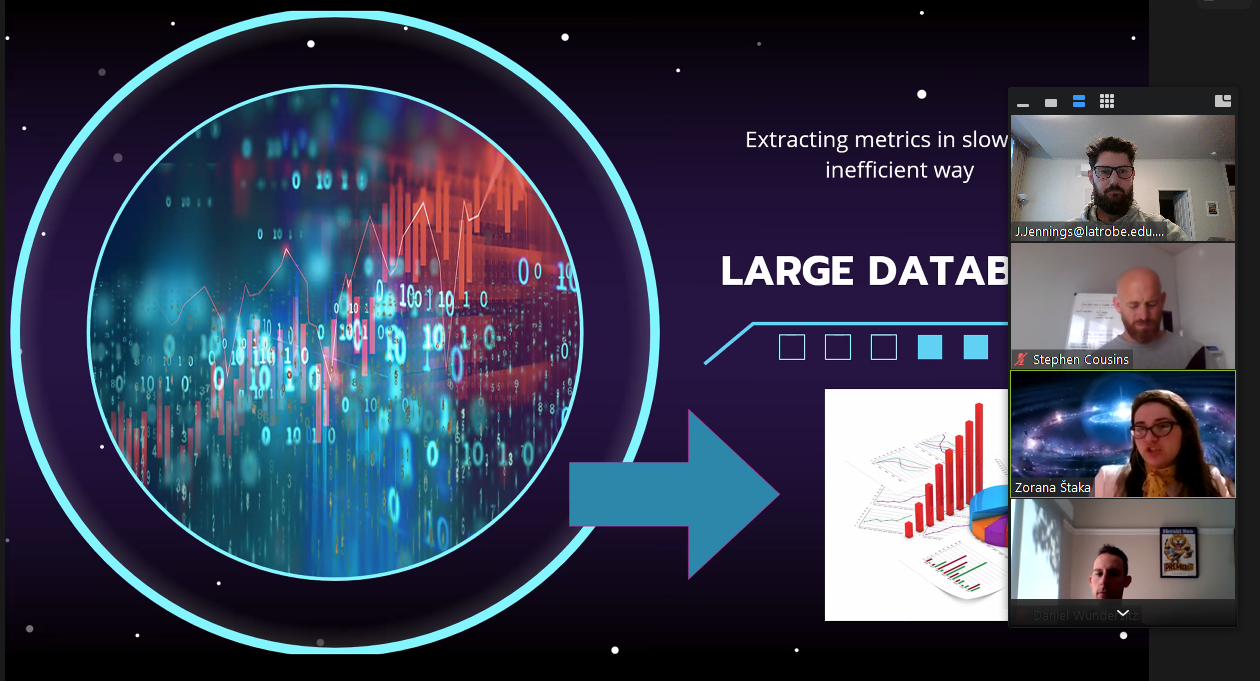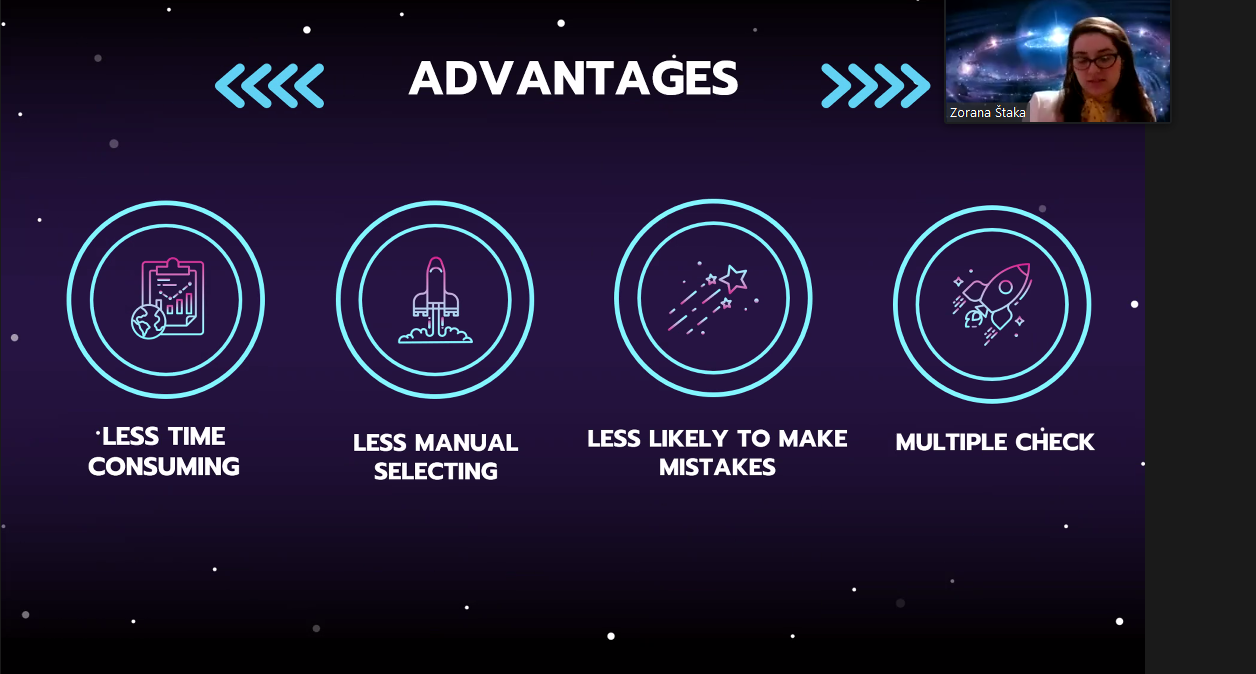Alumni Success Story: Zorana helps Australian and New Zealand researchers reduce processing time by orders of magnitude
We love to tell you great stories with great outcomes and this is one of those.
For the last six months, Bosnia & Herzegovina Futures Foundation alumni Zorana Štaka has been working with a Ph.D. student Jacob Jake Jennings from La Trobe University. His Ph.D. thesis is about Quantify match demands for training prescription. The sport that is being analysed is Australian Football. The data is from the 2019 NAB League boy’s season. NAB League is an under nineteen Australian competition. This competition is one of the primary sources of recruitment for the AFL. The AFL is a fully professional men's competition. The AFL demands the best talent and it is the Nab League’s job to develop and showcase that talent early. This research aims to provide the coaches unique, multi-layered information about competition demands. This information will allow more specific training prescription, giving the team and individuals the best opportunity at success.
To be able to get useful information about how players should train, the first step is to figure out what is a determining factor in the game outcome. The running speed of the players is one of the most important factors of the game outcome. To be able to have a clear picture of demands during the game each player was wearing GPS units that were collecting data in real-time during the game. Data about velocity (speed), accelerations, odometer (how much distance is covered), latitude and longitude, player load with the timestamp, and many others were collected. This resulted in millions of numbers.
The Problem
Having a lot of data is a big advantage because we can clearly understand more than ever why things happen the way they do. More importantly, this also allows us to manipulate things – once we know what is the key factor that determines the outcome. Extracting data and getting all the calculations done with precision is the key to get useful information.
In the case of this research, the data processing was being done in one part with simple Python code, another part in Excel files, and some parts could be implemented neither in Python nor in Excel. The metrics that needed to be calculated consists of different velocity thresholds, common within the literature, NAB League and AFL, various indicators of how much time was spent running at speed intervals. The most important thing is to see what leads to velocity peaks to be able to adjust training to better fit what is required in the actual game. If extracting required metrics is not done in an autonomous way, things can get complicated, slow, and hard to handle quickly.
The Solution
Divide et impera. All the required data processing was divided into six parts. Each part was separately implemented in Python using concepts of Object-oriented programming. The testing was conducted in detail to make sure all the calculations were right. Following this process and the calculations and formulas undergo double and even triple-checking. Once all 6 parts were finished, the all-in-one version was developed. All you need to do to run analysis is to choose two folders (input and output folder) and 2 files. All the rest is being done autonomously with a computer and there is no need for human input at all.
The Impact
To be able to extract required metrics more than 6 million numbers that need to be calculated using complex formulas, per player per game. This gives more than 13.3 billion numbers in total. Before, when the manual input method was used, with constant copy-pasting there was lots of space to make an error and constant attention for human attention. Now it takes just 3-5 minutes to analyse one player with no human intervention at all after the start.
Advantages of using a special design Python program:
- Less time consuming
- Less manual work
- Less likely to make an error
- Multiple checks
- Easy to make a change and add additional parameters
The same process specified program to accommodate needs for data processing can be done in other Sports Science analyses. This can also be done in other branches of science where there is a lot of data and the need to do many calculations.
About the Team
Jacob Jake Jennings is Strength and Conditioning Coach and Sports Scientist from Brisbane, Australia. He obtained his bachelor’s degree in Exercise and Movement Science from the Queensland University of Technology in Australia. Jacob undertook a Masters in High-Performance Sport through ACU. During his master’s studies, he was investigating concussions in rugby union with a special focus on performance in the reactive agility test. Jacob worked with several teams and individual sports around the world, including the United Kingdom, Qatar, and Australia. Jake took the opportunity to undertake an Industry Ph.D. with La Trobe University and the Bendigo Pioneers where he aims to bridge the performance gap between the NAB League and AFL.
Zorana Štaka is a Teaching Assistant at the Faculty of Electrical Engineering in East Sarajevo. She worked on various types of projects, from large industry Information systems to accommodate the needs of Electrical Distribution to developing and designing applications for data processing in Bioinformatics. Wanting to further develop her skills in software engineering and research she enrolled in a master’s degree in software engineering at the School of Electrical Engineering in Belgrade, Serbia.




